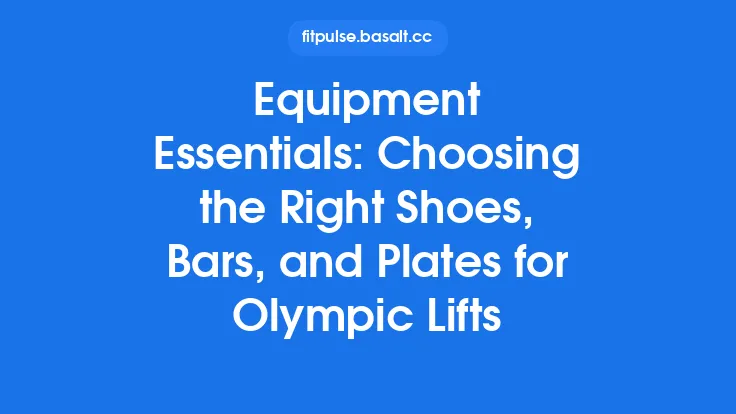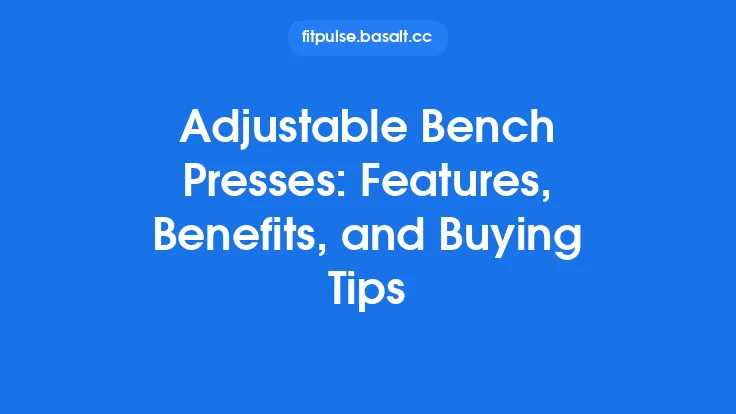Weightlifting shoes are far more than a stylish addition to a home gym; they are a functional tool that can dramatically influence performance, safety, and comfort during heavy lifts. While many lifters start with generic training shoes or even barefoot, the right pair of weightlifting shoes can provide the stability, heel elevation, and fit needed to maximize force transfer, improve technique, and reduce injury risk. This guide breaks down the three most critical attributes—stability, heel height, and fit—while comparing popular models and explaining how each factor interacts with different lifts and individual biomechanics.
Understanding Stability: The Foundation of a Powerful Lift
Why Stability Matters
Stability in a weightlifting shoe refers to the shoe’s ability to resist unwanted movement in all planes—fore‑aft, side‑to‑side, and rotational—when you load the barbell. A stable platform ensures that the force you generate through your hips, knees, and ankles is transmitted directly to the ground, rather than being dissipated by a wobbling foot. This is especially important for:
- Squats (high‑bar, low‑bar, front, and overhead) – A stable base prevents the knees from caving inward and helps maintain an upright torso.
- Olympic lifts (snatch, clean & jerk) – The rapid transition from the pull to the catch phase demands a firm foot that won’t shift under the heavy load.
- Deadlifts and Romanian deadlifts – While many lifters prefer a flat sole for deadlifts, a stable shoe can still improve balance and reduce ankle strain.
Key Design Elements that Provide Stability
| Feature | How It Contributes to Stability | Typical Materials |
|---|---|---|
| Rigid Midsole (often a TPU or carbon fiber plate) | Eliminates flex under load, creating a solid platform. | Thermoplastic polyurethane (TPU), carbon fiber, high‑density EVA. |
| Flat, non‑compressible outsole | Prevents the sole from “cushioning” the lift, which would absorb power. | Hard rubber, non‑abrasive compounds. |
| Wide base and low cut | Increases the contact area with the floor, reducing lateral wobble. | Full‑foot coverage, sometimes reinforced toe caps. |
| Secure strap or lacing system | Locks the foot in place, minimizing internal foot movement. | Velcro straps, double‑lace systems, hook‑and‑loop closures. |
Comparing Stability Across Popular Models
| Model | Midsole Material | Outsole Hardness (Shore A) | Notable Stability Feature |
|---|---|---|---|
| Adidas Adipower 2 | TPU plate + EVA | 85 | Dual‑strap system + reinforced toe box |
| Nike Romaleos 4 | TPU + carbon fiber plate | 88 | Hook‑and‑loop strap + double‑lace for a “lock‑down” feel |
| Reebok Legacy Lifter II | TPU plate | 82 | Wide, flat outsole with a slightly raised heel |
| Inov‑8 Fastlift 335 | TPU plate + EVA | 80 | Minimalist design, but still a rigid plate for stability |
| Sabo Deadlift Shoes (flat sole) | Hard rubber sole (no plate) | 90 | Extremely flat, ideal for deadlifts but less heel elevation |
When choosing a shoe for maximum stability, prioritize a rigid midsole plate and a hard, non‑compressible outsole. Shoes that combine a TPU plate with a carbon fiber reinforcement (e.g., Romaleos 4) often deliver the stiffest platform, while still offering a modest amount of “give” for comfort.
Heel Height: Leveraging the Mechanical Advantage
The Biomechanical Role of the Heel
A raised heel effectively shortens the distance between the ankle and the floor, allowing lifters with limited ankle dorsiflexion to achieve a deeper squat without compromising torso angle. The heel also creates a forward tilt of the foot, encouraging a more upright torso position—critical for high‑bar squats and Olympic lifts.
Typical Heel Height Ranges
| Heel Height (inches) | Ideal Lift Types | Typical Users |
|---|---|---|
| 0.5 – 0.75 | Front squats, high‑bar squats, snatch, clean & jerk | Lifters with good ankle mobility, Olympic weightlifters |
| 0.75 – 1.0 | Low‑bar squats, power cleans, general strength training | Average lifters, those with moderate ankle restriction |
| 1.0 – 1.25 | Deep squat work, mobility‑focused training, some powerlifters | Lifters with significant ankle limitations or who prefer a very upright torso |
| 0 (flat sole) | Conventional deadlifts, sumo deadlifts, Romanian deadlifts | Deadlift‑focused athletes, those who need a neutral foot position |
How Heel Height Affects Technique
- Squat Depth – A higher heel reduces the need for ankle dorsiflexion, allowing the hips to descend further while keeping the knees tracking over the toes.
- Torso Angle – With a raised heel, the lifter can maintain a more vertical torso, decreasing shear forces on the lumbar spine during high‑bar squats.
- Bar Path – In Olympic lifts, a proper heel height helps keep the bar close to the body, facilitating a smoother pull‑under phase.
Heel Height Comparison of Leading Shoes
| Model | Heel Height (inches) | Recommended Use |
|---|---|---|
| Adidas Adipower 2 | 0.75 | Versatile; works well for both squats and Olympic lifts |
| Nike Romaleos 4 | 0.75 (removable heel insert) | Adjustable; can be swapped for a 0.5‑inch insert for deadlifts |
| Reebok Legacy Lifter II | 0.75 | Ideal for squats and cleans |
| Inov‑8 Fastlift 335 | 0.75 | Good for Olympic lifts; slightly lower heel for better deadlift feel |
| Sabo Deadlift Shoes | 0 (flat) | Pure deadlift platform; no heel elevation |
If you train across multiple disciplines, consider a shoe with a removable heel insert (e.g., Romaleos 4). This allows you to switch between a higher heel for squats and a lower or flat configuration for deadlifts without purchasing a second pair.
Fit: The Intersection of Comfort, Support, and Performance
Why Fit Is Not Just About Size
A well‑fitted weightlifting shoe should lock the foot in place, support the arch, and prevent any internal movement that could lead to blisters or loss of power. Unlike running shoes, where cushioning and a “break‑in” period are desirable, weightlifting shoes aim for a snug, almost glove‑like feel from the first rep.
Anatomical Considerations
| Foot Feature | Impact on Shoe Fit | Adjustment Tips |
|---|---|---|
| Arch Height (low, medium, high) | Determines how the midsole contacts the foot; a mismatched arch can cause heel lift or excessive pressure on the forefoot. | Choose shoes with a built‑in arch support that matches your foot type, or add an orthotic insole if needed. |
| Toe Box Width | A narrow toe box can cramp the forefoot, especially during deep squats where the foot spreads. | Look for models with a slightly wider toe box (e.g., Legacy Lifter II) or size up by a half size. |
| Ankle Circumference | A low‑cut shoe may feel tight around the ankle for users with larger calves. | Opt for a high‑cut or a shoe with an adjustable strap that can accommodate a larger ankle. |
| Instep Length | A longer instep may cause the laces to feel loose, leading to foot slippage. | Use a double‑lace system or a hook‑and‑loop strap to secure the foot. |
Lacing and Strapping Systems
- Traditional Lacing – Offers a customizable fit but can be time‑consuming to tighten fully. Double‑lace patterns (e.g., “heel lock”) are common for added security.
- Velcro/Hook‑and‑Loop Straps – Provide rapid tightening and a consistent pressure across the foot. Many lifters pair a strap with a minimal lacing system for the best of both worlds.
- Hybrid Systems – Some shoes (e.g., Romaleos 4) combine a full lace with a strap, allowing the lifter to lock the foot in place after a quick lace‑up.
Sizing Recommendations
- Measure Both Feet – Use a Brannock device or a simple ruler to measure foot length and width.
- Try On With Lifting Socks – Wear the same thin, moisture‑wicking socks you’ll use during training.
- Check for “Heel Lift” – When you stand, the heel should sit flush against the back of the shoe; any upward movement indicates a size that’s too large.
- Test the Squat Position – Perform a bodyweight squat in the shoe. Your toes should have room to spread, and the foot should feel locked without pressure points.
Fit Comparison of Popular Models
| Model | Sizing Notes | Arch Support | Toe Box | Ankle Cut |
|---|---|---|---|---|
| Adidas Adipower 2 | Runs true to size; consider half‑size up for wide feet | Medium arch (standard) | Slightly tapered | Low‑cut with strap |
| Nike Romaleos 4 | Slightly narrow; size up if you have a wide forefoot | Medium‑high arch | Moderately wide | High‑cut with strap |
| Reebok Legacy Lifter II | True to size; generous width | Medium arch | Wide toe box | Low‑cut, double‑strap |
| Inov‑8 Fastlift 335 | Slightly smaller; size up for broader feet | Low arch (flatter) | Narrower | Low‑cut, lace‑only |
| Sabo Deadlift Shoes | True to size; flat sole may feel tighter | Low arch | Narrow | Low‑cut, lace‑only |
Matching Shoe Characteristics to Your Training Goals
| Primary Goal | Recommended Heel Height | Stability Priority | Fit Preference |
|---|---|---|---|
| Olympic Weightlifting (Snatch, Clean & Jerk) | 0.5 – 0.75 | Very high (rigid plate) | Snug, with strap for lock‑down |
| Powerlifting (Squat, Bench, Deadlift) | 0.75 – 1.0 for squats; flat for deadlifts | High (plate + wide base) | Secure, possibly high‑cut for ankle support |
| General Strength Training (Goblet Squats, Overhead Press) | 0.5 – 0.75 | Moderate to high | Comfortable fit, easy on/off |
| Deadlift‑Focused Training | 0 (flat) or removable heel insert set to 0.5 | Moderate (flat sole) | Loose‑fit acceptable, but foot should not slide |
| Mobility/Flexibility Work | Low heel (0.5) or flat | Low to moderate (some give) | Slightly looser for range of motion |
Maintenance and Longevity Tips
Even though weightlifting shoes are built to be durable, proper care can extend their lifespan:
- Air‑dry after each session – Moisture can degrade the adhesive that holds the midsole plate.
- Rotate pairs – If you train multiple times per week, having a second pair allows each to rest and dry.
- Clean the outsole – Use a soft brush and mild soap to remove chalk and sweat residue; this maintains traction on gym flooring.
- Inspect the strap/lacing system – Replace worn Velcro or frayed laces promptly to avoid loss of foot lock‑down.
- Avoid excessive impact – Weightlifting shoes are not designed for running or plyometrics; using them for high‑impact cardio can compromise the rigid plate.
Final Thoughts
Choosing the right weightlifting shoe is a balance of three core factors:
- Stability – A rigid midsole plate and hard outsole create the solid platform needed for maximal force transfer.
- Heel Height – Determines how comfortably you can achieve depth and maintain torso position; a removable heel insert offers the most versatility.
- Fit – A snug, secure fit with appropriate arch support and a reliable closure system ensures that the foot stays locked in place throughout the lift.
By evaluating each of these attributes against your specific training style—whether you’re an Olympic lifter, a powerlifter, or a general strength enthusiast—you can select a shoe that not only enhances performance but also protects you from unnecessary strain. Remember that the best shoe is the one that feels like an extension of your body, allowing you to focus on the lift, not on adjusting your footwear. Happy training!





